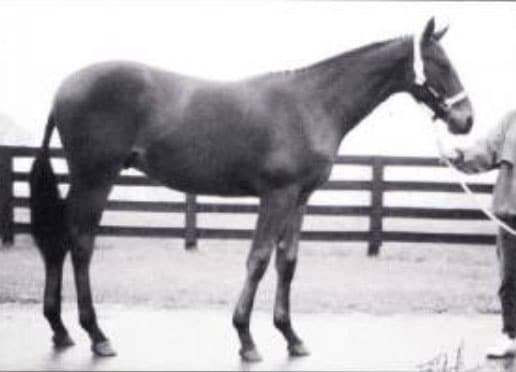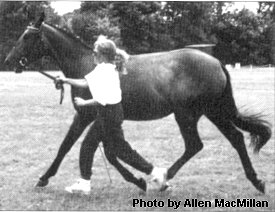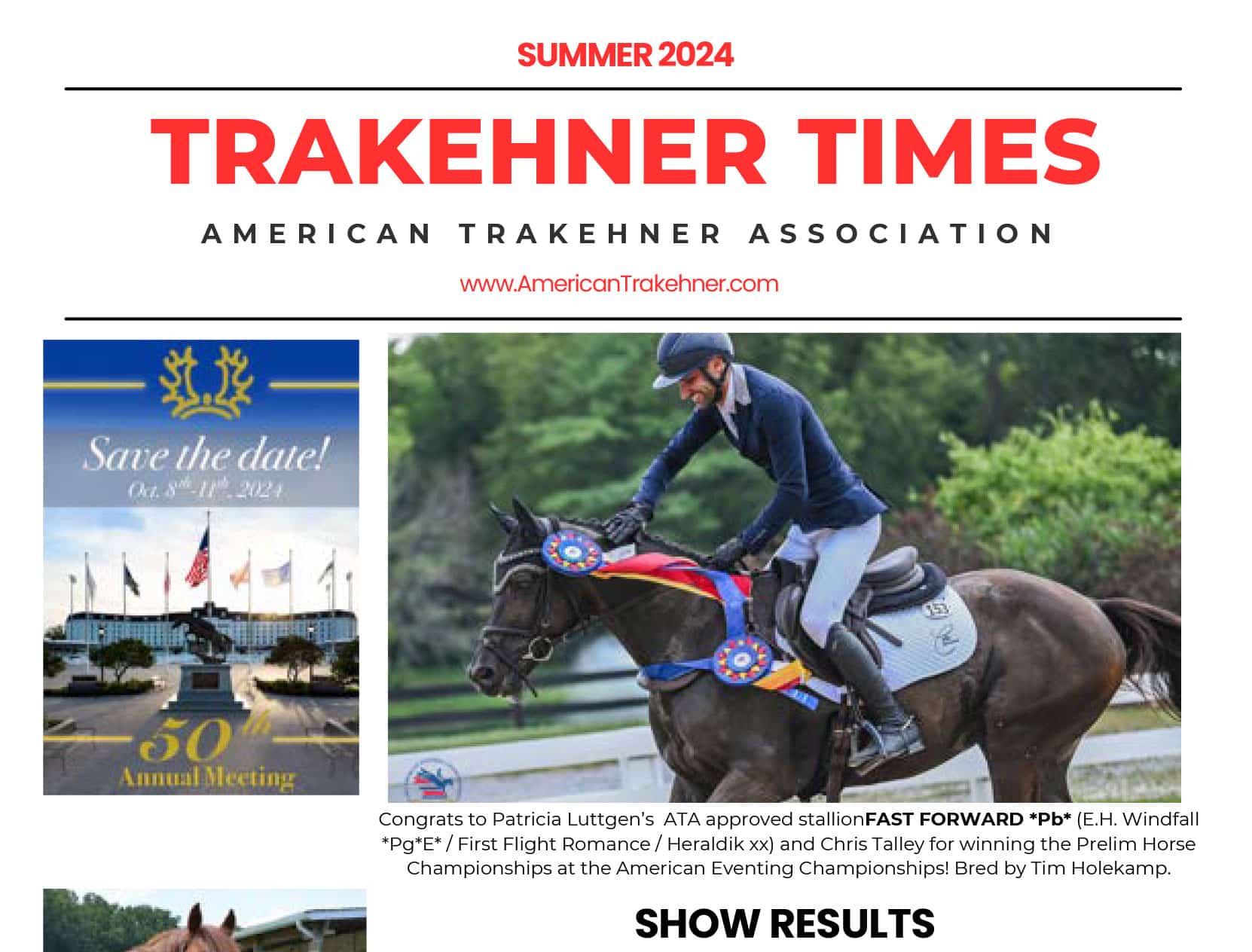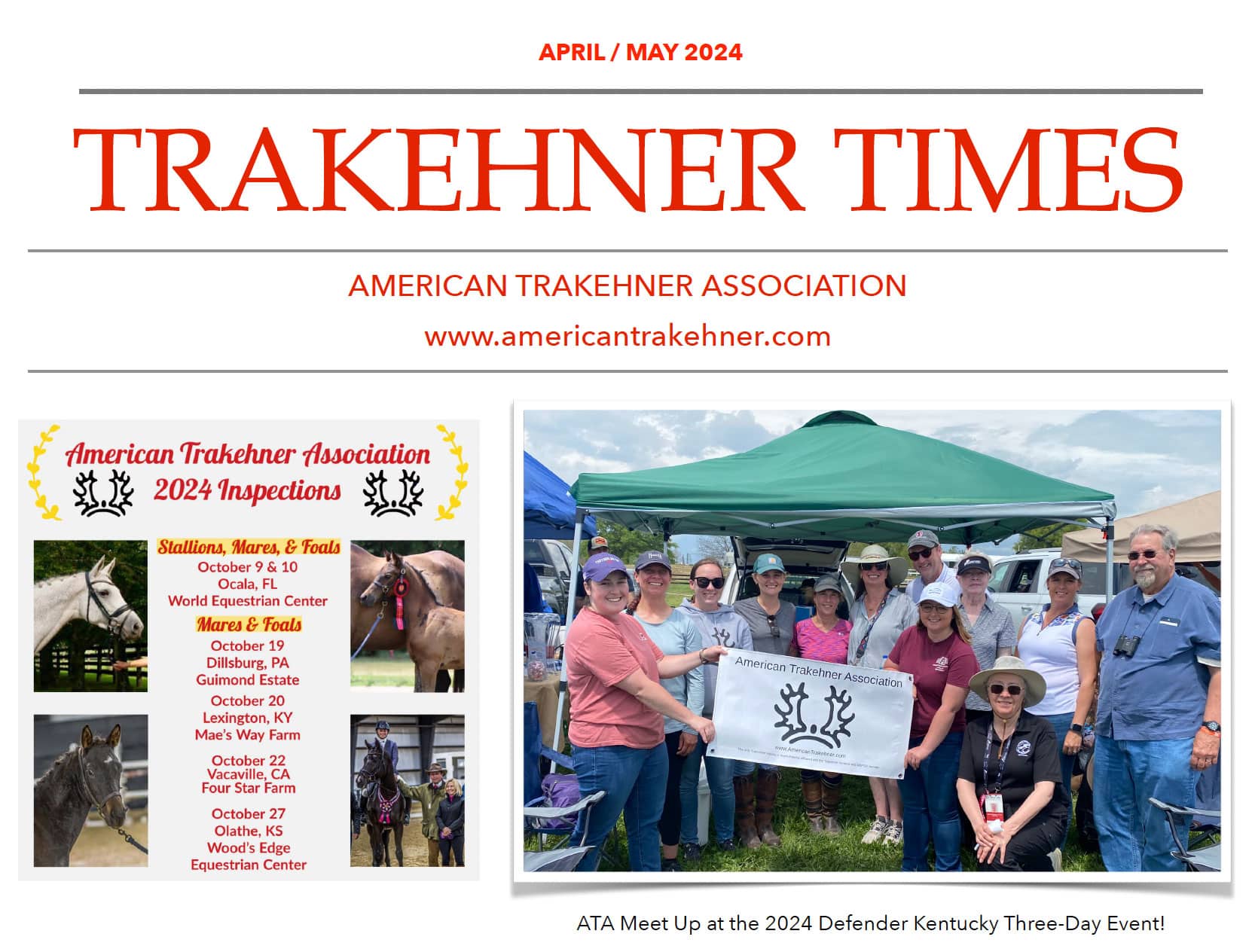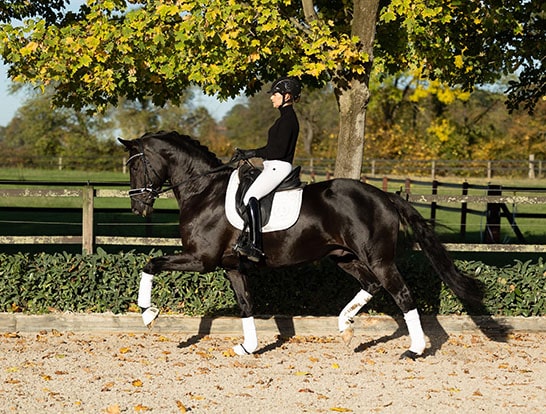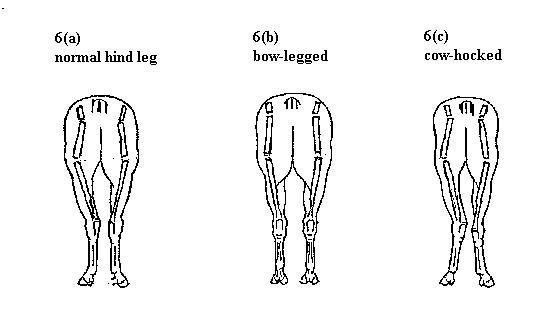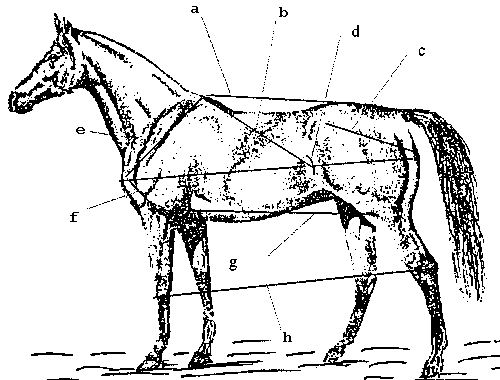by Heather Whinery – Zaccagnini
(from the 1993 Fall issue of The American Trakehner)
Whether you plan to show in hand, compete under saddle or simply work with horses on a frequent basis, the information and demonstrations given in the “Showing Your Sport Horse In Hand” video could prove to be invaluable. J. Ashton Moore, the writer of the video script, has acquired much experience from acting as an AHSA “I” rated dressage judge, judge training instructor, dressage trainer and instructor, FEI level dressage competitor, and sport horse breeder. Through this presentation, he explains several techniques that will make your horse more manageable, respectful and safer to handle. Establishing the correct relationship between you and your equine partner can make a great difference in the results the handler gets when asking the horse to do his job.
The video begins by leading the viewer through the basic ground work of training a horse in hand. Proper equipment and proper fit of halter or bridle is explained with added examples of misuse or miscalculation. Also, the handler’s grip and hand positions are explained from beginner to advanced levels.
Every discipline involved in the equine world requires endless preparation, and working in hand is no exception. The viewer is led through several exercises that will help the horse and handler to convey messages of control, praise and correct reactions. All of the exercises explained and demonstrated are very important in the learning process of the young horse.
No equine enthusiast would disagree that “stop” and “go” are two of the most important actions to be communicated between human and horse. Hence, “Showing Your Sport Horse In Hand” continues the young horse’s education by showing several ways to teach the handler just how to accomplish this. The handler is asked to stay calm and quiet while asking for each transition, and the narrator explains how to deal with problems that arise as you go. Before too long, handler and horse are halting and proceeding quietly and politely.
Turning is also another essential lesson that is not forgotten in this video. Techniques to convey necessary body space and turning away from the handler are shown in detail, making it easy for the viewer to understand. The use of body language is especially stressed here, showing the viewer how the handler can become the dominant member of this “horse and handler” herd.
As the training of your horse progresses with each step of this video, the carriage, pace, and gait of the horse become more even and correct. Moore spends ample time explaining how proper training and preparation can improve the performance of the horse. Exemplary performance by the horse as a result of this kind of training can make a great difference in how he shows himself to the judge, while unsatisfactory or poor turnout can only lead to disappointment.
After the video progresses through the steps of training the young horse in hand, several important aspects of showing in hand are illustrated. The video helps prepare the in-hand showman for the horse show “unknowns.” This information is priceless if you are unfamiliar with the events that make up the in-hand show. Showing on the triangle, standing for conformation, expectations of the judge, and turnout are all explained with several examples, making it easy for the viewer to comprehend the entire in-hand show experience. The video concludes with actual judge’s comments on real presentations, giving the audience a bird’s eye view of what the judges want to see.
The “Showing Your Horse In Hand” video is well worth watching for any equine enthusiast who wishes to improve the relationship between horse and human, and if you are considering trekking to an in-hand show, a few minutes viewing this video will save time and disappointment at the event.
Visit their website at: https://www.usdf.org/ for more details. Or visit their YouTube channel at: https://www.youtube.com/@USDFORG



